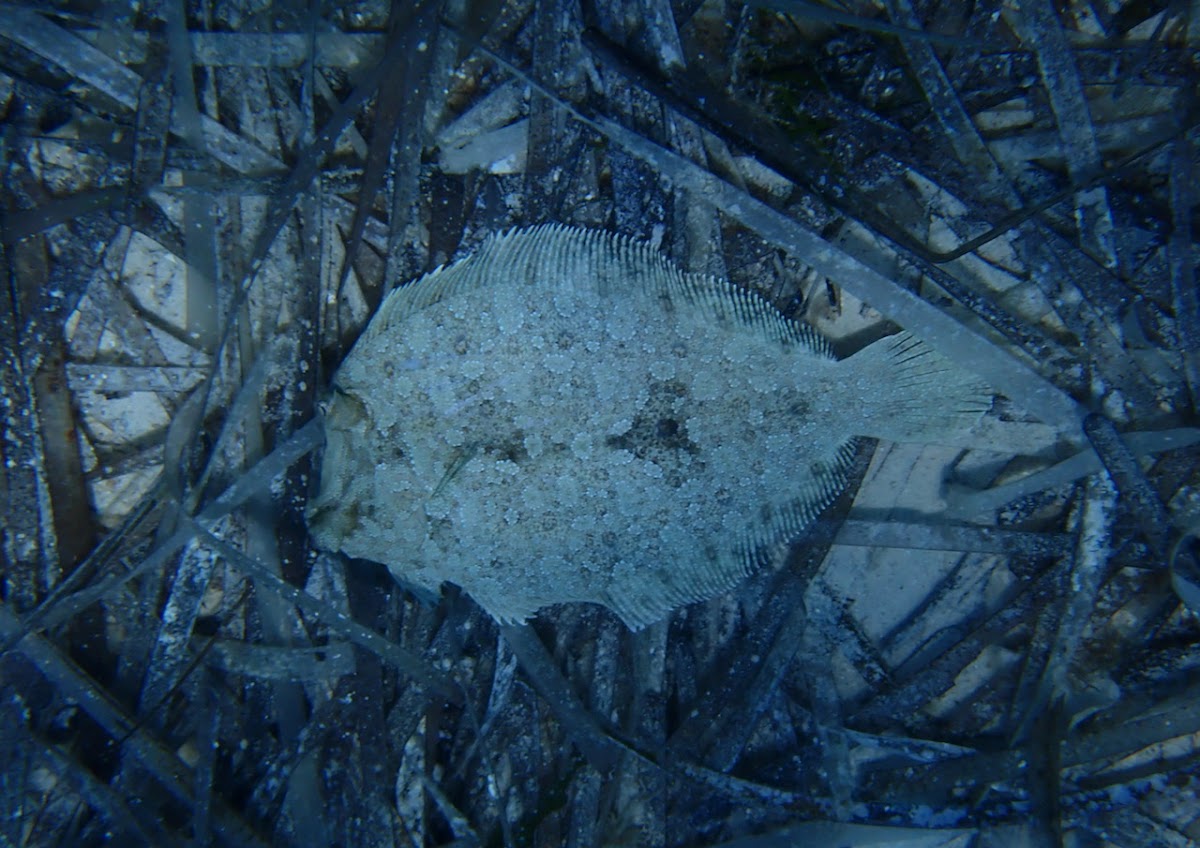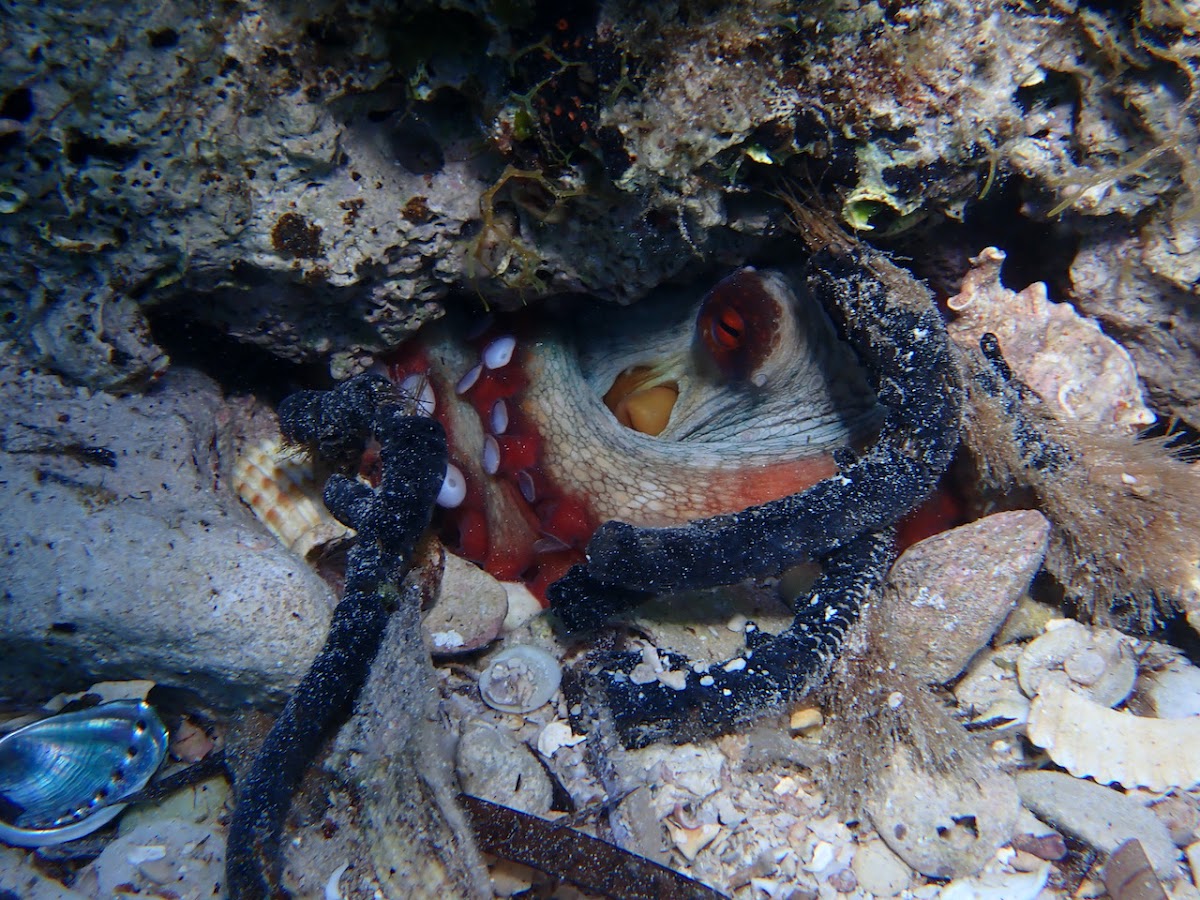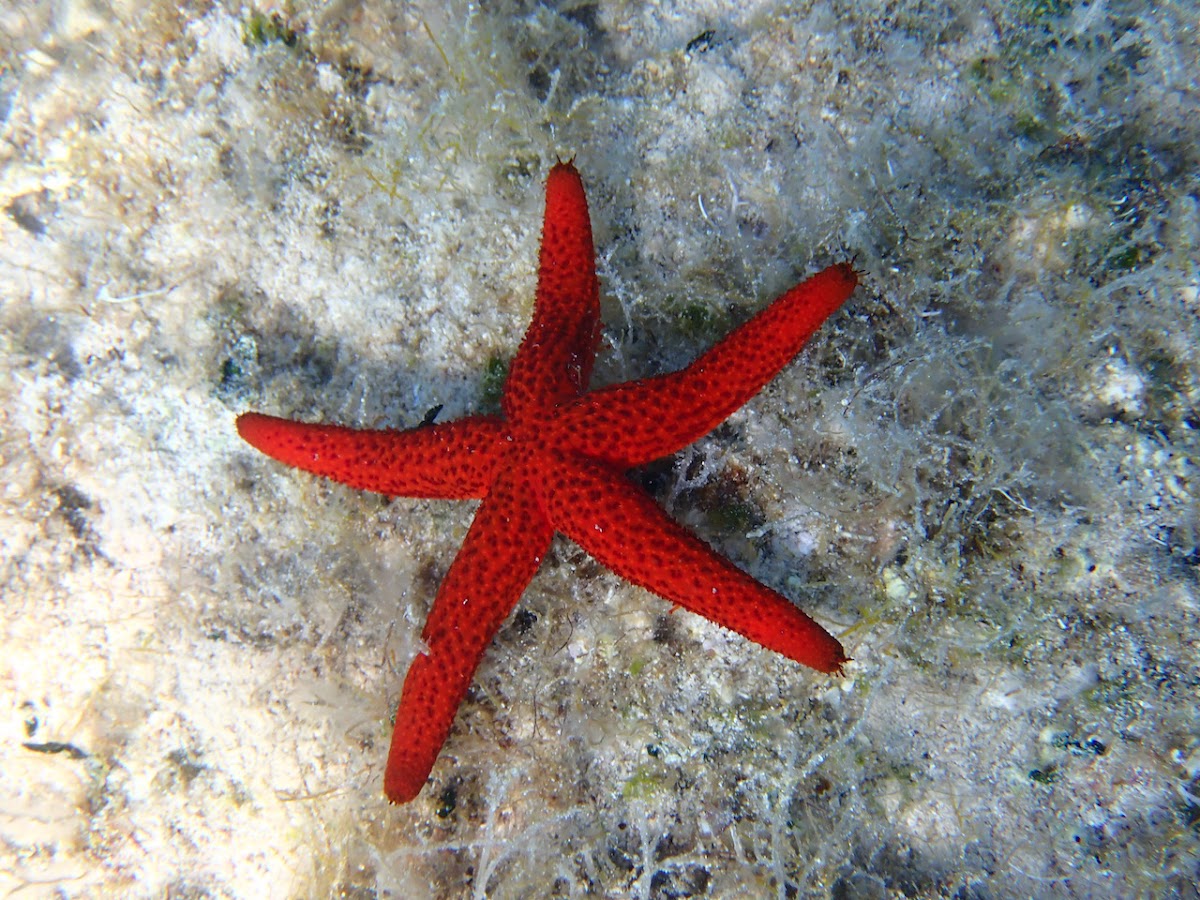From Premuda we sailed around Silba and anchored on W side of Olib in the afternoon. The sun slowly dried up the clouds and the summer weather was back. It was too late for snorkelling, but it was just right for a nice swim and a gin&tonic.
Next morning Olib looked pretty as always and I couldn't wait for the sun to climb high enough in the sky to go snorkelling. And Olib didn't disappoint. Almost right next to our boat I found the White Sea-Squirt (Bradavičasti kozolnjak or Phallusia mamillata).
There were also several small Common stingrays (Navadni morski biči or Dasyatis pastinaca) there.
I still get excited if I manage to make a photo of a really very shy Peacock worm (Pahljačasti cevkar or Sabella pavonina).There were plenty of gobies of all kinds there - this one is a Giant goby (Skalni glavač or Gobius cobitis).
And this was my first Italian Keyhole Limpet (Italijanska strešica or Diodora italica). Only back at home I managed to figure out what it was.
I saw plenty of Mediterranean intertidal hermit crab (Zelenkasti obrežni samotarec or Clibanarius erythropus). Searching around in Internet back home taught me that it is also called St Piran's hermit crab in UK, named after the saint St Piran, patron saint of Cornwall. It disappeared from UK in 1980, probably due to the pollution, and is very slowly returning in recent years. It's definitely not rare in Adria.
This is the same kind of crab, but this one not only has the much fancier house, but a garden as well. On his house the red algae Golden seaweed (Topovejnata lavrencija or Laurencia obtusa) is growing.
As always in Olib I saw lots of tunicates, this is one of the social seasquirts (zadružni plaščarji).
These Green ormers (Petrovi ušesi or Haliotis lamellosa) were laying in the sand just like this, without my interference.
Late in the afternoon we sailed to the E side of Silba and in the evening we had a delicious dinner in restaurant Vrata Velebita. After the dinner we sailed back to Olib, there was a bit of NE wind forecast for the night and it could be uncomfortable on E side of Silba. Next morning the weather was great and the water nice and pretty and turquoise.
I was lucky that we were not in a hurry, so after a late breakfast I got to go snorkelling again.
And just because they are so pretty, here's a whole family of white sea squirts.
I often see scallops in Olib, this time I found a Bald scallop (Mala pokrovača or Protopecten glaber)......and a Mediterranean scallop (Velika pokrovača or Pecten jacobeus).
On these Mediterranean fan worms (Spalancanijev cevkar or Sabella spallanzanii) there were sepia eggs attached, they are those black grapes tied to the tubes of the worms.
This was one of the catches of the day - a Mottled sea hare (Veliki morski zajček or Aplysia fasciata). I don't see them too often.
And here are couple of more gobies - this one is a Rock goby (Mrki glavač or Gobius paganellus)...
...and this a Black goby (Črni glavač or Gobius niger)Here the sepia eggs are attached to the tube of a tube worm, you can see that the tentacles of the worm are inside the tube.
This strange thing became not just the catch, but also the mystery of the day, I really couldn't figure out what it could be, so I took the photos from all sides.
Only when looking at the photos on my computer I figured out that there is a shell on the bottom and on the top there is a big fleshy body, so I figured it must be a snail. And only at home by consulting all of my books I realised it was an Italian Keyhole Limpet (Italijanska strešica or Diodora italica), the kind that I already photographed the day before, only upside-down this time. It would make my detective work a bit easier had I turned it, but I never touch anything under water, I don't want to frighten or damage the pretty things.I don't know whom these chimneys belong, but they are covered with Bryozoan (mahovnjak).
The shy Peacock worms (Pahljačasti cevkar or Sabella pavonina) come in many different colours. If you are lucky enough to come close to see them.
I was really happy to have the opportunity to snorkel in Olib twice and since the holiday was slowly ending I thought that snorkelling was more or less over for this summer.
In the middle of the day we sailed off and in late afternoon anchored on SW side of Lošinj in bay Sunfarni. We had a nice lazy evening with lots of swimming and nice dinner. Next day we sailed towards Unije but on the way stopped on N side of Lošinj near the small rocky island of Karbarus. It is a nice-weather anchorage only, because it's very open, but water is even more blue than in Olib. I had to go snorkelling and was very pleasantly surprised.First I saw two guys that I don't see very often - Wide-eyed flounders (Širokogledi romb or Bothus podas).
Look how wide apart their eyes are, much more than with common flounder. And it is difficult to comprehend, that all flounders have eyes on each side of the head like all other fish when they are born and only later one eye travels towards the other eye on the "upper" side of body.
The biggest surprise were many octopuses that I saw, this one was looking quite frightened.
I again saw gelatinous balls, but this one looked like a sack and the funny thing was that it was pulsating. Usually they are not moving.
This one wasn't moving, and on my computer I saw that above it was another very small one. I still have no ideas what it might be.
And there were two more octopuses...
...and I think this one was the prettiest of them all. Or at least looked the most like the kraken. Or Jack Sparrow.
Later we sailed to Unije to bay Vognišča and had a nice evening and calm night there. Next day we started early and sailed over the Kvarner bay and along W side of Istra and stopped in bay Polje for swimming. Bad weather and strong NE wind was forecast for the afternoon and the night so we wanted to get to the marina till evening. But all the day NW wind was blowing, so we made another stop for swimming at island Kotez, one of the Brioni islands. On the way we saw many Mediterranean jellyfish or Fried egg jellyfish (Morska cvetača or Cotylorhiza tuberculata).
Look how wide apart their eyes are, much more than with common flounder. And it is difficult to comprehend, that all flounders have eyes on each side of the head like all other fish when they are born and only later one eye travels towards the other eye on the "upper" side of body.
The biggest surprise were many octopuses that I saw, this one was looking quite frightened.
I again saw gelatinous balls, but this one looked like a sack and the funny thing was that it was pulsating. Usually they are not moving.
This one wasn't moving, and on my computer I saw that above it was another very small one. I still have no ideas what it might be.
And there were two more octopuses...
...and I think this one was the prettiest of them all. Or at least looked the most like the kraken. Or Jack Sparrow.
Later we sailed to Unije to bay Vognišča and had a nice evening and calm night there. Next day we started early and sailed over the Kvarner bay and along W side of Istra and stopped in bay Polje for swimming. Bad weather and strong NE wind was forecast for the afternoon and the night so we wanted to get to the marina till evening. But all the day NW wind was blowing, so we made another stop for swimming at island Kotez, one of the Brioni islands. On the way we saw many Mediterranean jellyfish or Fried egg jellyfish (Morska cvetača or Cotylorhiza tuberculata).
Then we decided not to sail to the marina but anchored in bay Stinjanska Draga. Even though there is a quarry on one side of the bay, it is quite pretty. There were plenty of boats there in the evening, but we were the only boat that stayed there over night. The wind finally turned to NE and became stronger, but much more annoying than that was loud music from the club on the hill and the restaurant on the beach.
Next morning we sailed into marina and we had one more pleasant surprise there - when we were almost turning into our pier we saw a dolphin. After tying our boat I went to the end of the pier and dolphin was still there. In couple of moments there were tens of people standing on the pier watching. I saw the dolphin again in the afternoon when we were getting to our car to drive home. It was a great end to the great week and great holiday.





















































